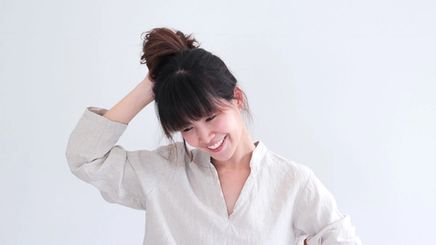
Essentialism and minimalism are often used interchangeably or put under the same school of thought. While they do have a lot in common — for example, both are hinged on discipline and living with intention — they also have very distinct qualities. If you find yourself feeling dragged down by clutter, material or otherwise, maybe it’s time to think about shifting to an essentialist or minimalist lifestyle.
What is a Minimalist Lifestyle?
Minimalist living isn’t a new concept, but modern proponents and the rise of social media gurus took it to another level. In design, it’s always linked to the belief that “less is more” and the Bauhaus mantra of “form follows function.” In any application, whether in art, packaging, fashion, or interiors, it’s characterized by clean lines, more neutral colors, and the use of negative space to draw attention to content. Think Scandinavian design, Japanese Zen, and their intersection, Japandi.
Thanks to the advent of high-rise buildings with smaller-cut units and soaring living costs, minimalism at home has become attractive to a broader audience. What started as an idea executed only by an elite few became a mass-market product sold by lifestyle vloggers and wellness coaches. It’s no longer just a piece of unaffordable art, but a principle that anyone can apply to their lives in some way, superficially or otherwise.
Some critics of the minimalist lifestyle claim it’s still elitist, saying it’s for those who have a choice. Those who can choose quality over quantity (as in a single luxury splurge over a fast-fashion haul) and those who aren’t already living it — that is, whose lives aren’t already minimal enough by circumstance. When you’re not rich, you keep things because you can’t replace them. The idea of redesigning an entire home to be aesthetically minimalist won’t even be an option.
Still, it remains attractive because of what it promises: less time cleaning, an , and peace of mind. The International Journal of Applied Positive Psychology found a consistent connection between “voluntary simplicity” and well-being, noting that consumerism and materialism have potentially negative repercussions for individuals.
Is Essentialism Different?
The main difference between essentialism and minimalism is in their practice. Writer Lawton Ursrey describes it as “the art of discerning between external noise and internal voice.” While minimalism can be a broad design concept that can have a wide range of applications including lifestyle, essentialism is more focused on the latter. It’s a way of life. Hence the overlapping connotations and usage — and a shared unofficial modern-day icon, Marie Kondo.
Maybe essentialism is minimalism for the people. It’s a kinder, less rigid approach that doesn't see things as the enemy, but as objects that either add value to our lives or don’t. Kondo is more of an essentialist by this definition since she encourages people to keep their things as long as they spark joy. She also doesn’t see as a chore but as a necessary process anyone can apply to any home, stuff or no stuff.
In this sense, essentialism provides a bit of leeway for those who cannot be minimalists. There are a lot: people who have babies, people with indoor pets, those who moved into family homes, renters and others living in small spaces, and yes, hoarders, too. It doesn’t matter how much stuff you have as long as it is essential to you. The beauty is that only you can define that, so, no pressure.
Want to pare your beauty routine ? Start using only what works for you. For a fresh start, apply Dove 0% Aluminum Deodorant Roll-On on your underarms to give it only the essentials — no aluminum or alcohol. Finally, slather on Vaseline Intensive Care Deep Restore Body Lotion, which is all you need for moisturized skin.
Which is Better for You?
Choosing between an essentialist and minimalist lifestyle is about figuring out what you can afford to do. While minimalism involves achieving a specific aesthetic (hey, no harm in that!), essentialism can be more personal and personalized (). If you struggle with clutter and are looking for a change, try applying these ideas to your daily life to see if they’re sustainable and, of course, if they spark joy.